GrabCAD

Concorde - Air France -
by GrabCAD
Last crawled date: 1 year, 11 months ago
The Aérospatiale-BAC Concorde supersonic transport (SST) was the more successful of only two supersonic passenger airliners to have operated commercially (the Tupolev Tu-144 being the other). First flown in 1969, Concorde service commenced in 1976 and continued for 27 years. It regularly flew from London Heathrow (British Airways) and Paris Charles de Gaulle (Air France) to New York JFK and Washington Dulles. It set many records, including circumnavigating the world in a time of 31 hours 27 minutes 49 seconds flight, on August 16, 1995.
The costly development phase represented a substantial economic loss for the British and French governments, although it made large operating profits for British Airways for much of its service life. Commercial flights, by British Airways and Air France, began on 21 January 1976. As a result of its only crash (in 2000), world economic effects arising from the September 11, 2001 attacks and other factors, operations ceased on 24 October 2003, with the last "retirement" flight on 26 November that year. Even in retirement, Concorde remains an icon of aviation history.
General characteristics
Crew: 9
Length: 202 ft 4 in[61] (61.66 m)
Wingspan: 84 ft 0 in (25.6 m)
Height: 40 ft 0 in (12.2 m)
Wing area: 3,856 ft² (358.25 m² )
Empty weight: 173,500 lb (78,700 kg)
Powerplant: 4 × SNECMA Olympus 593 Mk 610 afterburning turbojets
Performance
Maximum speed: Mach 2.04 (2,164 km/h)
Range: 3,900 nm (4,500 mi, 7,250 km)
Service ceiling: 60,000 ft (18,300 m)
Rate of climb: 1,525 m (5,000 ft) /min (25,41 m/s)
Wing loading: lb/ft² (kg/m²)
Thrust/weight: .373
Fuel consumption for max. range (max. fuel/max. range): 46.85 lb/mi (13.2 kg/km)
Maximum nose tip temperature: 260 °F (127 °C)
The costly development phase represented a substantial economic loss for the British and French governments, although it made large operating profits for British Airways for much of its service life. Commercial flights, by British Airways and Air France, began on 21 January 1976. As a result of its only crash (in 2000), world economic effects arising from the September 11, 2001 attacks and other factors, operations ceased on 24 October 2003, with the last "retirement" flight on 26 November that year. Even in retirement, Concorde remains an icon of aviation history.
General characteristics
Crew: 9
Length: 202 ft 4 in[61] (61.66 m)
Wingspan: 84 ft 0 in (25.6 m)
Height: 40 ft 0 in (12.2 m)
Wing area: 3,856 ft² (358.25 m² )
Empty weight: 173,500 lb (78,700 kg)
Powerplant: 4 × SNECMA Olympus 593 Mk 610 afterburning turbojets
Performance
Maximum speed: Mach 2.04 (2,164 km/h)
Range: 3,900 nm (4,500 mi, 7,250 km)
Service ceiling: 60,000 ft (18,300 m)
Rate of climb: 1,525 m (5,000 ft) /min (25,41 m/s)
Wing loading: lb/ft² (kg/m²)
Thrust/weight: .373
Fuel consumption for max. range (max. fuel/max. range): 46.85 lb/mi (13.2 kg/km)
Maximum nose tip temperature: 260 °F (127 °C)
Similar models
3dwarehouse
free

Concorde (British Airways)
...he type’s only crash on 25 july 2000 and other factors, its retirement flight was on 26 november 2003. #british_airways #concorde
cg_trader
$5

Aerospatiale BAC Concorde
...ic transports to have been operated commercially; the other is the soviet-built tupolev tu-144, which operated in the late 1970s.
grabcad
free

The Concord Fuselage Center section
...ic transports to have been operated commercially; the other is the soviet-built tupolev tu-144, which operated in the late 1970s.
grabcad
free

Aerospatiale BAC Concorde
...s to have been operated commercially; the other is the soviet-built tupolev tu-144, which was operated for a much shorter period.
3dwarehouse
free

British Airways Concorde
... was made for 3d challenge 005. #3d_challenge_005 #acad #acad_whiz #air_france #airplane #airways #british #concorde #plane #whiz
sketchfab
$79

Concorde Supersonic Airliner British Airways
...er jet airliner textured as british airways - concorde supersonic airliner british airways - buy royalty free 3d model by 3dhorse
thingiverse
free

Concorde
...the speed of sound. it was operated by british airways and air france up until it was commissioned due to increasing fuel prices.
grabcad
free

BAC Concorde
...2001 and the end of maintenance support for concorde by airbus, the successor to aérospatiale, contributed to the retirement.[13]
grabcad
free

Spirit of St Louis.
...eiling: 16,400 ft (5,000 m)
rate of climb: considered[41] ()
wing loading: 16 lb/ft2 (78 kg/m2)
power/mass: 23 lb/hp (10.4 kg/hp)
3dwarehouse
free

Sukhoi Su-33
...m pods #air_force #aircraft_carrier #airplane #battleplan #china #coldwar #missile #navy #russia #su27 #su33 #sukhoi #war #weapon
Concorde
3d_export
$17

CONCORDE
...concorde
3dexport
concorde
3ddd
$1

Lineatre Concorde
...lineatre concorde
3ddd
lineatre
lineatre concorde
3ddd
$1

Poliform Concorde
...poliform concorde
3ddd
poliform
concorde table by poliform
3ddd
$1

Concorde Poliform
...concorde poliform
3ddd
poliform
concorde table by poliform
turbosquid
$25

Concorde
... available on turbo squid, the world's leading provider of digital 3d models for visualization, films, television, and games.
3ddd
$1

Capdell Concord
...ncord
фабрика: capdell
коллекция: concord
размер: ↕ 82 cm, ↔ 57 cм, ↗ 60 см.
описание: стул, дерево, ткань.
сайт: www.capdell.com
3ddd
$1

Capdell Concord
...ncord
фабрика: capdell
коллекция: concord
размер: ↕ 82 cm, ↔ 57 cм, ↗ 60 см.
описание: стул, дерево, ткань.
сайт: www.capdell.com
design_connected
$13

Concorde table
...concorde table
designconnected
poliform concorde table computer generated 3d model. designed by gallina, emmanuel.
3ddd
$1

Concorde Grace poliform
...concorde grace poliform
3ddd
poliform
concorde grace poliform
3ddd
$1

Concorde - Grace- poliform
...concorde - grace- poliform
3ddd
poliform
concorde - grace- poliform
France
3ddd
free

France flag
...france flag
3ddd
флаг
france flag
3ddd
$1

Gautier France
...france , круглый
столик из коллекции alisa фабрики gautier france. размеры 500х500х390мм
turbosquid
$9

France
... available on turbo squid, the world's leading provider of digital 3d models for visualization, films, television, and games.
turbosquid
$2

France
... available on turbo squid, the world's leading provider of digital 3d models for visualization, films, television, and games.
turbosquid
$2

France
... 3d map of france for download as max, 3ds, dxf, fbx, and obj on turbosquid: 3d models for games, architecture, videos. (1630661)
3d_export
$11

FRENCHIE BULDOG FRANCES
...frenchie buldog frances
3dexport
anillo buldog frances
turbosquid
$5

France flag
...osquid
royalty free 3d model france flag for download as max on turbosquid: 3d models for games, architecture, videos. (1332264)
turbosquid
$70

Map of France
...free 3d model map of france for download as 3ds, max, and obj on turbosquid: 3d models for games, architecture, videos. (1299211)
turbosquid
$25

France Flag
...ty free 3d model france flag for download as ma, obj, and fbx on turbosquid: 3d models for games, architecture, videos. (1412764)
3d_ocean
$4

FRANCE 3D MAP
...ap
3docean
3d country france french geography land map object world
3d map of my country, france, with each departments can move.
Air
3ddd
$1
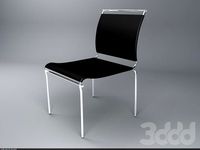
Calligaris air
...calligaris air
3ddd
air , calligaris
cтул calligaris air
3ddd
$1

Air freshener
...air freshener
3ddd
air freshener , освежитель
air freshener
design_connected
$16
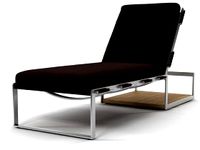
Air
...air
designconnected
flexform air lounge chairs computer generated 3d model. designed by antonio citterio.
turbosquid
$250
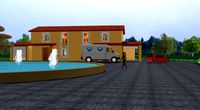
Heat pump air air
... available on turbo squid, the world's leading provider of digital 3d models for visualization, films, television, and games.
3d_export
$5
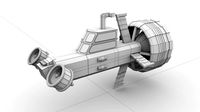
air
...air
3dexport
3ddd
$1
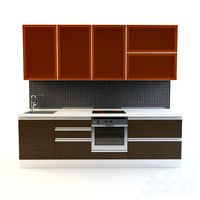
Кухня AIR
...кухня air
3ddd
air , мария
кухня air фабрики "мария"
3ddd
$1
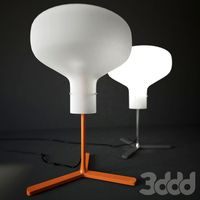
Лампа AIR
...лампа air
3ddd
boconcept , air
настольная лампа air, boconcept. в50½xø32см
3d_export
$40

air deflector
...air deflector
3dexport
air deflector
3d_export
$15

air purifier
...air purifier
3dexport
air purifier
3d_export
$5

macbook air
...macbook air
3dexport
macbook air
